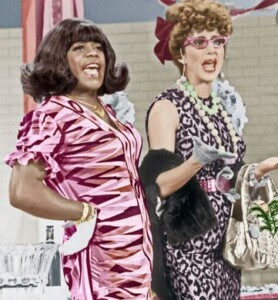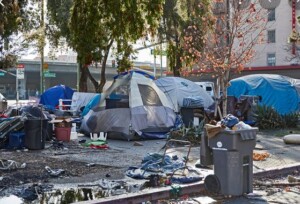
Others in my age bracket will remember fondly the Flip Wilson show, where one of his characters was Geraldine. Geraldine had several hilarious tag lines in the comedy skits, including “the Devil made me do it” and “what you see is what you get.”
The phrase “what you see is what you get” came to mind recently when a Feng Shui student told me about his studies with another teacher. That teacher imparted the principle, that above and beyond the Feng Shui of your own home, you can be affected by the things you see coming and going from your home. In the case study that the other teacher referenced, his client had good Feng Shui at home and at work, but was still plagued with some problems because of this even more non-obvious influence.
Of course this makes sense, and it is also an extension of the theories surrounding “construction sha,” when a neighbor is doing a mammoth demolition or construction project that you are forced to hear and see for an extended period of time. Additionally, we teach in Feng Shui classes that all your senses are involved when it comes to good feng shui or bad feng shui. What you see, hear, smell or feel intuitively can have a predictable impact on you.
Most of the time we give examples of how something in your immediate surroundings, at home and at work, could influence your health and well-being. But what about an objectionable or upsetting sight you are subjected to while driving or walking by? What about an eyesore, which is really not part of your immediate environment?

With the exception of the graffiti maker himself, most people don’t like seeing graffiti in their cities. All of us can become disturbed if we drive through a homeless encampment. Most of us are bothered by seeing shuttered businesses and dilapidated buildings. We may be upset seeing any neglected property, as well as seeing unhappy, unhealthy people walking down the street. In my ebook, Feng Shui Tips for House Hunters, I also state the obvious with many examples, such as not wanting to live too close to a hospital or cemetery.
To have any influence over these upsetting visuals related to poverty, sickness or crime, we need to be more civic-minded and vote in politicians who can be trusted to carry out the will of the people when it comes to crime, homelessness, and mental illness. That is stating the obvious as well. But the point of my musing is that from a Feng Shui perspective, “what you see, is most definitely what you get.” If you see despair in front of you, you will take in that energy too. It might only be a tiny fraction of pain compared to the person whose life is so destitute, but you can certainly experience “second-hand despair” as it builds up over time and frequent exposure.
I only live 45 miles from Los Angeles now, but when friends from L.A. come to visit me in Irvine, they can’t help but comment about how lushly green and beautifully landscaped the city is and the surprising absence of dangerous or derelict characters roaming about. I lived in Los Angeles for 52 years. I didn’t even completely realize until I moved away, just how much I had experienced a kind of environmentally-triggered PTSD from the daily onslaught of upsetting things I would see and hear, even though I lived in one of the more affluent areas.
Some people eventually go numb and compartmentalize their thoughts and feelings so that they can continue to function and not be completely paralyzed by what they see. To a certain extent, people can do this in their own homes when the clutter morphs into extreme hoarding, and yet the occupant doesn’t really see the mess anymore. Just know that if you see something that bothers you, on a chronic basis or even just occasionally, it can transfer from your psyche to your body and back, resulting in mood swings or body ailments from this example of a very non-obvious origin.
Author: Kartar Diamond
Company: Feng Shui Solutions ®
From the Philosophical and Metaphysical Musings Blog Series

